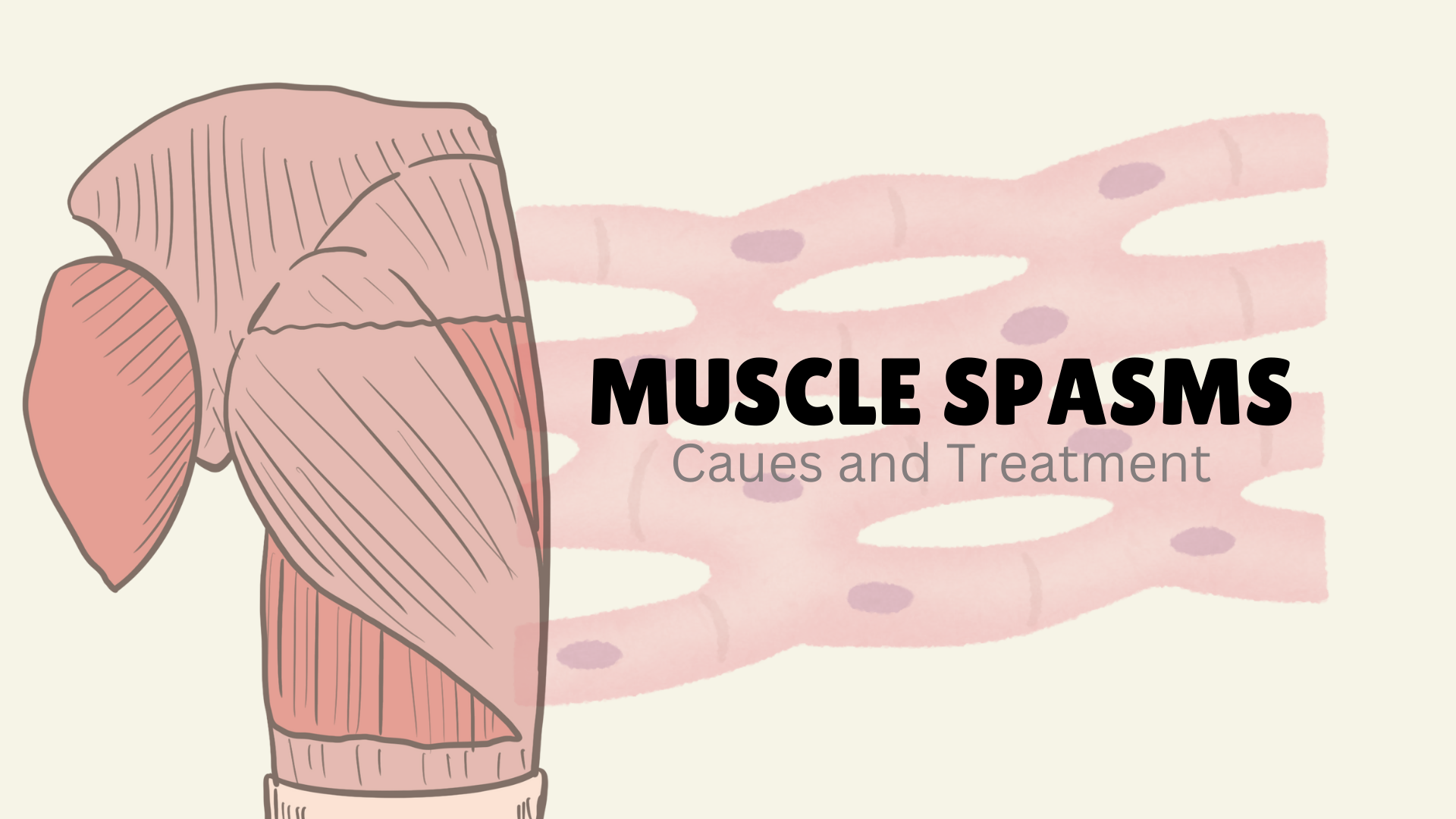Muscle spasms are involuntary contractions of muscles that can be painful and disruptive. They can occur in various parts of the body, including the legs, back, chest, ear, and shoulder. Understanding the causes and effective treatments can help alleviate these uncomfortable symptoms. Know how long does diazepam take to work for muscle spasms?
Muscle Spasms Causes and Treatment
What Causes of Muscle Spasms
- Dehydration: Lack of adequate fluids can lead to muscle cramps.
- Electrolyte Imbalance: Low levels of minerals like potassium, calcium, and magnesium can trigger spasms.
- Overuse and Fatigue: Intense exercise or prolonged physical activity can strain muscles, causing spasms.
- Poor Circulation: Reduced blood flow to muscles can result in cramping.
- Nerve Compression: Issues like herniated discs can compress nerves, leading to spasms.
- Medications: Certain drugs, including diuretics and statins, can cause muscle cramps as a side effect.
- Underlying Conditions: Conditions such as multiple sclerosis, diabetes, or spinal cord injuries can contribute to muscle spasms.
How to Treat Muscle Spasms? Naturally and Alternative Treatment
1. How to Treat Muscle Spasms in Legs
- Stretching: Gently stretch the affected muscle to relieve the spasm.
- Hydration: Drink plenty of water and consider electrolyte-rich fluids to prevent dehydration.
- Massage: Lightly massage the cramping muscle to encourage relaxation.
- Heat and Cold Therapy: Apply a warm towel or heating pad to the muscle, or use an ice pack to reduce pain.
2. How to Treat Muscle Spasms in Back
- Rest: Avoid strenuous activities to allow the muscles to recover.
- Heat Therapy: Use a heating pad or warm bath to relax tight muscles.
- Over-the-Counter Pain Relievers: Medications like ibuprofen or acetaminophen can reduce pain and inflammation.
- Physical Therapy: A physical therapist can provide exercises to strengthen back muscles and prevent future spasms.
3. How to Stop Muscle Spasms in Chest
- Deep Breathing Exercises: Practice deep breathing to relax chest muscles.
- Gentle Stretching: Stretch the chest muscles by raising your arms overhead and interlocking your fingers.
- Hydration and Nutrition: Ensure adequate intake of water and electrolytes.
- Avoiding Triggers: Identify and avoid activities that strain chest muscles.
4. How to Stop Muscle Spasms in the Ear
- Warm Compress: Apply a warm compress to the area around the ear to relax the muscles.
- Hydration: Drink plenty of fluids to maintain electrolyte balance.
- Medication: In some cases, a doctor may prescribe muscle relaxants.
- Medical Evaluation: Consult a healthcare provider if spasms persist, as they could be related to underlying ear or jaw issues.
5. How to Relieve Muscle Spasms in Neck and Shoulder
- Massage Therapy: Gently massage the shoulder muscles to relieve tension.
- Heat and Cold Packs: Alternate between heat and cold packs to reduce pain and inflammation.
- Stretching and Strengthening Exercises: Perform shoulder stretches and strengthening exercises recommended by a physical therapist.
- Avoiding Overuse: Avoid repetitive shoulder movements that can exacerbate the problem.
Prevention Tips for Muscle Spasms
Stay Hydrated: Drink plenty of water throughout the day.
- Balanced Diet: Ensure adequate essential minerals like potassium, calcium, and magnesium intake.
- Regular Exercise: Incorporate regular physical activity to keep muscles strong and flexible.
- Proper Warm-Up and Cool-Down: Always warm up before exercise and cool down afterward to prevent muscle strain.
- Avoid Prolonged Inactivity: Take some breaks to move around if you sit or stand for long periods at the same place.
How Long Does Diazepam Take to Work for Muscle Spasms?
Diazepam (Valium) is a medication that can be used to treat muscle spasms. Here’s a brief overview of how long it typically takes to work:
Onset of Action
- Oral Administration: When taken orally, diazepam is usually absorbed quickly. Most people begin to feel its effects within 30 to 60 minutes. Peak effects generally occur within 1 to 2 hours after taking the medication.
- Intravenous (IV) Administration: When diazepam is given intravenously, it can start to work almost immediately, usually within a few minutes.
Duration of Effect
- Oral Administration: The muscle-relaxing effects of Bensedin Diazepam 10mg taken orally can last for several hours, typically around 4 to 6 hours, but it can vary depending on individual metabolism and dosage.
- Intravenous (IV) Administration: The effects are more rapid but may not last as long as oral administration, typically providing relief for about 4 to 6 hours.
Factors Affecting Onset and Duration
- Dosage: Higher doses may lead to quicker and more pronounced effects.
- Individual Differences: Factors such as age, weight, metabolism, and overall health can influence how quickly and effectively diazepam works.
- Tolerance: Regular use of diazepam can lead to tolerance, meaning higher doses may be required to achieve the same effect over time.
Important Considerations
- Medical Supervision: Always use diazepam under the guidance of a healthcare provider, especially for muscle spasms, to ensure appropriate dosing and to monitor for potential side effects.
- Potential Side Effects: Diazepam can cause drowsiness, dizziness, and dependency. Long-term use should be avoided unless directed by a healthcare provider.
In summary, diazepam typically starts working within 30 to 60 minutes when taken orally and within a few minutes when administered intravenously. Its muscle-relaxing effects generally last for about 4 to 6 hours. Always follow your healthcare provider’s instructions when buy valium online for muscle spasms.
Conclusion
Muscle spasms can be managed and treated effectively with proper hydration, nutrition, stretching, and appropriate medical interventions. Identifying the underlying cause is essential for long-term relief and prevention. If muscle spasms persist or are particularly severe, consulting a healthcare professional is advisable to rule out any serious underlying conditions.
